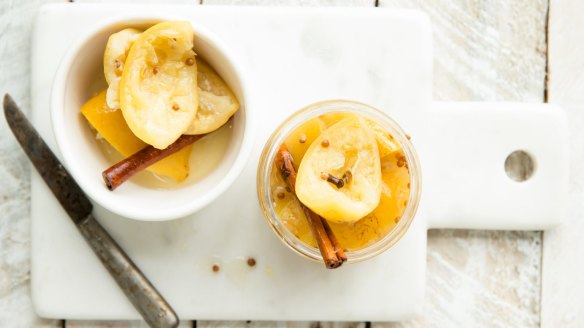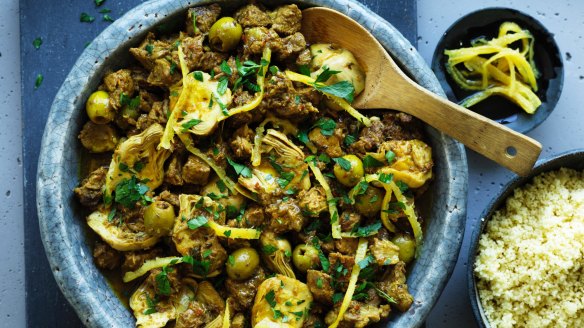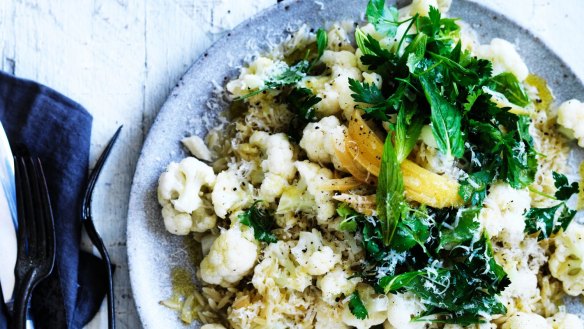How to use preserved lemons

- Make your own: Blue Ducks' preserved lemons recipe
- Lamb tagine with artichokes and green olives
- Risoni with cauliflower and preserved lemon
Lemons are flavour powerhouses. Their bright and acidic juice can enliven all kinds of dishes. The zest can deliver a concentrated punch of citrus, as well as a delicate, almost floral scent.
Preserved lemons, however, take the ubiquitous fruit to another level.

They're especially popular in Middle Eastern, Indian and North African food, though they are most commonly associated with Moroccan cuisine.
"I'd go so far as to say that preserved lemons are the most important condiment in the Moroccan [pantry]," writes Paula Wolfert, one of the foremost experts on the country's cuisine, in The Food of Morocco. They are just what they sound like: lemons cured in a salty brine.
When Wolfert was first introducing home cooks to Moroccan cooking, preserved lemons were an exotic novelty. Now, they're much easier to find – and you can use them for a whole world of dishes. Here are some tips.

Sourcing or making: The beauty of preserved lemons is that no matter where you are, you can get them – so long as you're willing to make them yourself. If you make your own, you can tuck in spices as well. Try Meyer lemons when they're in season. Wolfert says they get very soft in preserving, though your standard (Eureka) lemon will do. Expect the month-cured preserved lemons to last about a year in the fridge, about half that time for the quick variations. You can buy preserved lemons at well-stocked supermarkets, and from market stalls specialising in Mediterranean, Middle Eastern and North African cuisines.
Prepping: Whether your preserved lemons are homemade or store-bought, you should first rinse them under cold water to remove excess saltiness. Wolfert says she typically uses only the rind of preserved lemons, though she sometimes includes the pulp in marinades. Plenty of recipes call for the whole lemon, however. You can let your preferences on texture and appearance dictate what you decide to do.
Using: First thing first: "Fresh lemons are never an adequate substitute" for preserved, Wolfert writes. "The taste, texture and aroma of preserved lemons are unique and cannot be duplicated by other means." The reverse is true: "Pluck one from the jar, rinse it off, and add it to everything that calls for lemon – and everything that doesn't," Clara Ines Schuhmacher says on Serious Eats.
In The Essential Mediterranean, Nancy Harmon Jenkins also encourages home cooks to think beyond North African cuisine when it comes to preserved lemons, "as their characteristic, rather exotic flavour adds interest to many meat and vegetable combinations and their bright yellow colour contrasts well with the dark hues of a lamb ragout or a ratatouille with lots of eggplant. Or try them as an ingredient in a winter bean or lentil salad." Other possibilities: pastas, dips and chicken salad.
Given their connection to Moroccan cuisine, preserved lemons are a natural addition to cous cous and tagines. Chef, restaurateur and cookbook author Yotam Ottolenghi includes preserved lemons in his list of essential "Ottolenghi ingredients" in his latest book, Ottolenghi Simple. He suggests using them to cut through rich or earthy dishes, such as eggs and beetroot. Ottolenghi also adds preserved lemons to dressings.
The Washington Post
Appears in these collections
The best recipes from Australia's leading chefs straight to your inbox.
Sign up- More:
- How to